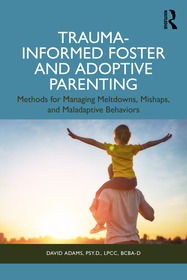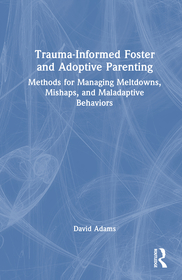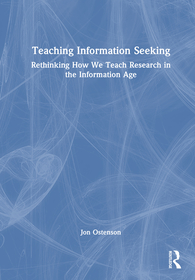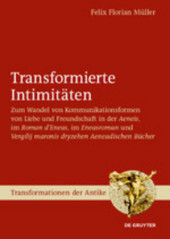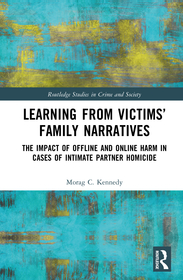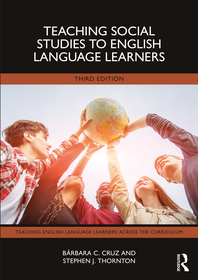
Teaching Social Studies to English Language Learners
Series: Teaching English Language Learners across the Curriculum;
- Publisher's listprice GBP 38.99
-
18 627 Ft (17 740 Ft + 5% VAT)
The price is estimated because at the time of ordering we do not know what conversion rates will apply to HUF / product currency when the book arrives. In case HUF is weaker, the price increases slightly, in case HUF is stronger, the price goes lower slightly.
- Discount 20% (cc. 3 725 Ft off)
- Discounted price 14 902 Ft (14 192 Ft + 5% VAT)
Subcribe now and take benefit of a favourable price.
Subscribe
18 627 Ft

Availability
Estimated delivery time: In stock at the publisher, but not at Prospero's office. Delivery time approx. 3-5 weeks.
Not in stock at Prospero.
Why don't you give exact delivery time?
Delivery time is estimated on our previous experiences. We give estimations only, because we order from outside Hungary, and the delivery time mainly depends on how quickly the publisher supplies the book. Faster or slower deliveries both happen, but we do our best to supply as quickly as possible.
Product details:
- Edition number 3
- Publisher Routledge
- Date of Publication 13 November 2024
- ISBN 9781032499437
- Binding Paperback
- No. of pages288 pages
- Size 254x178 mm
- Weight 453 g
- Language English
- Illustrations 49 Illustrations, black & white; 37 Halftones, black & white; 12 Line drawings, black & white; 5 Tables, black & white 612
Categories
Short description:
This fully updated new edition provides readers with a comprehensive understanding of the challenges that face English language learners (ELLs), also known as English Learners (ELs), as well as the ways in which educators might address them in the social studies classroom.
MoreLong description:
This fully updated new edition provides readers with a comprehensive understanding of the challenges that English language learners (ELLs), also known as English Learners (ELs), face, as well as the ways in which educators might address them in the social studies classroom.
The authors offer context-specific strategies for the full range of the social studies curriculum, including geography, U.S. history, world history, economics, and government. These practical instructional strategies will effectively engage learners and can be incorporated as a regular part of instruction in any classroom. Features of this fully updated new edition include:
· An updated and streamlined introduction, which provides an essential overview of ELL theory in a social studies-specific context;
· "Teaching Tips" that offer helpful suggestions and ideas for creating and modifying lesson plans to be inclusive of English Learners;
· Practical examples and pedagogical elements in Part 3, which include more visuals, suggestions for harnessing new technologies, discussion questions, and reflection points; and
· Useful lists of online and print resources for teachers and students.
Teaching Social Studies to English Language Learners is a valuable reference to help pre- and in-service social studies educators meet the challenges of including all learners in effective instruction.
“I do not believe there are similar works to this text in book form. You can find ELL texts that can be applied to SS, but there is nothing that I have run across that supports ELLs in SS. I also think this is an excellent text for helping think about differentiation for all learners.”
— Alexander Butler, Assistant Professor at Bowling Green State University, Ohio, USA
“I would unequivocally recommend this book for future teachers and even current teachers.”
— Natalie Young, Assistant Professor of Early Childhood Education, Northern Illinois University, USA
MoreTable of Contents:
List of Figures
List of Tables
Acknowledgements
Introduction
PART I — English Learners
1.1 — Orientation
Key Judicial Decisions . . . . . . . . . . . . . . . . . . . . . . . . . . . . . . . . . . . . . . . . . . . . . . . . . . . . . . . . .
The Rise of Mainstreaming . . . . . . . . . . . . . . . . . . . . . . . . . . . . . . . . . . . . . . . . . . . . . . . . . . . . . .
1.2 — Not All ELs and Families Are the Same
Stages of Cultural Adjustment . . . . . . . . . . . . . . . . . . . . . . . . . . . . . . . . . . . . . . . . . . . . . . . . . . . .
Cultural Practices at School . . . . . . . . . . . . . . . . . . . . . . . . . . . . . . . . . . . . . . . . . . . . . . . . . . . . . .
Effective Home–School Communication . . . . . . . . . . . . . . . . . . . . . . . . . . . . . . . . . . . . . . . . . . .
Ideas: On Fostering Access . . . . . . . . . . . . . . . . . . . . . . . . . . . . . . . . . . . . . . . . . . . . . . . . . . . . . . .
Ideas: On Fostering Approachability . . . . . . . . . . . . . . . . . . . . . . . . . . . . . . . . . . . . . . . . . . . . . . .
Ideas: On Achieving Good Follow-Through . . . . . . . . . . . . . . . . . . . . . . . . . . . . . . . . . . . . . . . .
Summary
1.3. — English Learners with Exceptionalities
Pedagogic and Programmatic Models
Teacher Approaches. . . . . . . . . . . . . . . . . . . . . . . . . . . . . . . . . . . . . . . . . . . . . . . . . . .
Gifted EL Students. . . . . . . . . . . . . . . . . . . . . . . . . . . . . . . . . . . . . . . . . . . . . . . . . . . . . . . . . . . . .
1.4 — The Process of English Language Learning in the Social Studies Classroom and What to Expect
Introduction
Stages of Language Development
Principles for Creating Effective Language Learning Environments
Constructing a Curriculum with Language Needs in Mind. . . . . . . . . . . . . . . . . . . . . . . . . . . . .
Language Learning in the Social Studies Classroom. . . . . . . . . . . . . . . . . . . . . . . . . . . . . . . . . . . .
Conclusion. . . . . . . . . . . . . . . . . . . . . . . . . .
PART II — Social Studies Teaching and Learning
2.1 — Principles of Social Studies Teaching and Learning
Elements of an Instructional Program. . . . . . . . . . . . . . . . . . . . . . .
Social Studies and the Common Core Standards . . . . . . . . . . . . . . . . . . . . . . . . . . . . . . . . . . . . . . .
Study Skills. . . . . . . . . . . . . . . . . . . . . . . . . . . . . . . . . . . . . . . . . . . . . . . . . . . . . . . . . . . . . . . .
Intellectual Skills . . . . . . . . . . . . . . . . . . . . . . . . . . . . . . . . . . . . . . . . . . . . . . . . . . . . . . . . . . . . . . .
Conclusion
2.2 — Social Studies-Focused EL Scholarship
The Classroom Environment . . . . . . . . . . . . . . . . . . . . . . . . . . . . . . . . . . . . . . . . . . . . . . . . . . . . . .
Content-Centered Language Instruction . . . . . . . . . . . . . . . . . . . . . . . . . . . . . . . . . . . . . . . . . . . . . .
Best Language Practice in Social Studies Instruction . . . . . . . . . . . . . . . . . . . . . . . . . . . . . . . . . . . .
Discussion and Questioning . . . . . . . . . . . . . . . . . . . . . . . . . . . . . . . . . . . . . . . . . . . . . . . . . . . . .
Discovery and Exploration . . . . . . . . . . . . . . . . . . . . . . . . . . . . . . . . . . . . . . . . . . . . . . . . . . . . .
Language Use . . . . . . . . . . . . . . . . . . . . . . . . . . . . . . . . . . . . . . . . . . . . . . . . . . . . . . . . . . . . . . . . . .
Sheltered Instruction . . . . . . . . . . . . . . . . . . . . . . . . . . . . . . . . . . . . . . . . . . . . . . . . . . . . . . . . . . .
Individualized and Differentiated Instruction. . . . . . . . . . . . . . . . . . . . . . . . . . . . . . . . . . . . . . . . . .
Technology-Based Instruction and Learning . . . . . . . . . . . . . . . . . . . . . . . . . . . . . . . . . . . . . . . . . .
Cooperative Learning Skills . . . . . . . . . . . . . . . . . . . . . . . . . . . . . . . . . . . . . . . . . . . . . . . . . . . . . . .
Bilingual Education and Translanguaging. . . . . . . . . . . . . . . . . . . . . . . . . . . . . . . . . . . . . . . . . . . . .
Culturally Responsive Pedagogy . . . . . . . . . . . . . . . . . . . . . . . . . . . . . . . . . . . . . . . . . . . . . . . . . . .
The Importance of Reflective Practice . . . . . . . . . . . . . . . . . . . . . . . . . . . . . .
Promising Approaches . . . . . . . . . . . . . . . . . . . . . . . . . . . . . . . . . . . . . . .
Summary
2.3 — Pathways for Enacting the Social Studies Curriculum
Textbooks . . . . . . . . . . . . . . . . . . . . . . . . . . . . . . . . . . . . . . . . . . . . . . . . . . . . . . . . .
Visual Resources . . . . . . . . . . . . . . . . . . . . . . . . . . . . . . . . . . . .
Graphic Organizers. . . . . . . . . . . . . . . . . . . . . . . . . . . . . . . . . . . . . . . . . . . . . . . . . . . .
Alternative “Texts” . . . . . . . . . . . . . . . . . . . . . . . . . . . . . .
Demonstrations and Total Physical Response. . . . . . . . . . . . . . . . . . . . . . . . . . . . . . . . . . . . . . . . . .
Role Playing and Simulations. . . . . . . . . . . . . . . . . . . . . . . . . . . . . . . . . . . . . . . . . . . . . . . . . . . .
Assessment. . . . . . . . . . . . . . . . . . . . . . . . . . . . . . . . . . . . . . . . . . . . . . . . . . . . . . . . . . .
Some final reminders . . . . . . . . . . . . . . . . . . . . . . . . . . . . . . . . . . . . . . .
PART III — Teaching Social Studies
3.1 — Introduction
3.2 — Geography
Looking into Classrooms. . . . . . . . . . . . . . . . . . . . . . . . . . . . . . . . . . . . . . . . . . . . . .
Introduction. . . . . . . . . . . . . . . . . . . . . . . . . . . . . . . . . . . . . . . . . . . . . .
Kinesthetic Learning and Stratified Questioning: The Concept of Scale (Levels 1–4) . . . . . . .
Kinesthetic Learning and Visual Aids: Africa: Physical Geography and Population Distribution (Levels 3 and 4) . . . . . . . . . . . . . . . . . . . . . . . . . . . . . . . . . . . . . . . . . . . . . . . . . . . . .
K–W–L–Q–H, Visual Aids, Guided Imagery, and Stratified Questioning: Women’s Work in Southern India (Levels 2–4) . . . . . . . . . . . . . . . . . . . . . . . . . . . . . . . . . . . . . . . . . . . . . . .
Discovery Exercise Using Visual Aids and Stratified Questioning: Adaptation to the Environment: Place Where Native Americans Lived (Levels 1–4) . . . . . . . . . . . . . . . . . . . .
Discussion Dyads, Vocabulary Development, Map Interpretation: Sharing the Colorado River (Levels 2–4) . . . . . . .
3.3 — U.S. History
Looking into Classrooms . . . . . . . . . . . . .
Introduction . . . . . . . . . . . . .
Visual Aids, Stratified Questioning: Lewis and Clark Expedition (Levels 1–4) . . . . . . . . . . . . .
Dioramas, Kinesthetic Learning, and Cooperative Learning: Lewis and Clark Activity 3: Creating a Diorama (Levels 1–4). . . . . . . . . . . . . . . . . . . . . . . . . . . . . . . . .
Political Cartoon, Critical Analysis, Questioning and Discussion: Immigration in U.S. History (Levels 1–4) . . . . . . . . . . . . .
Timelines and Stratified Questioning Strategy: Woodrow Wilson (Levels 1–4) . . . . . . . . . . .
Modified Text, Visual Aids, Picture Books, Stratified Questioning, and Music: Women in WWII (Levels 1–4) . . . . . . . . . . . . . . . . . . . . . . . . . . . . . . . . . . . . . . . . . . . . . . . . . . .
Visual Aids, Role Playing, Guided Reading, and Stratified Questioning: Japanese Americans During WWII (Levels 1–4) . . . . . . . . . . . . . . . . . . . . . . . . . . . . . . . . . . . . . . . . . . . .
Eisenhower’s Military–Industrial Complex Speech, 1961: Simplifying Text and Role Playing (Levels 3 and 4) . . . . . . . . . . . . . . . . . . . . . . . . . . . . . . . . . . . . . . . . . . . . . . . . . . . .
3.4 — World History
Looking into Classrooms . . . . . . . . . . . . .
Introduction . . . . . . . . . . . . .
Culturally Sensitive Pedagogy, Visual Aids, Stratified Questioning, and Research Skills: World Origins of Our Class (Levels 1–4) . . . . . . . . . . . . . . . . . . . . . . . . . . . . . . . . . . . . .
Visual Aids, Guided Observation, Word Wall, and Stratified Questioning: The Agricultural Revolution (Levels 1 and 2). . . . . . . . . . . . . . . . . . . . . . . . . . . . . . . . . . . . . . . . . . .
Realia, Word Wall, and Visual Aids: The Renaissance (Levels 1–4) . . . . . . . . . . . . . . . . . . . . .
Visual Aids and Primary Source Documents: Cultural Encounter and Exploration (Levels 3 and 4) . . . . . . . . . . . . . . . . . . . . . . . . . . . . . . . . . . . . . . . . . . . . . . . . . . . . . . . . . . . . . . .
Simplified Text and Concept Map: The Enlightenment (Levels 2–4) . . . . . . . . . . . . . . . . . . . .
Visual Aids, Stratified Questioning, and Guided Discussion: The Industrial Revolution in Great Britain (Levels 1–4) . . . . . . . . . . . . . . . . . . . . . . . .
Role Playing and Cooperative Learning: Factory Life in Twentieth Century Mexico (Levels 2–4) . . . . . . . . . . . . . . . . . . . . . . . . . . . . . . . . . . . . . . . . . . . . . . . . . . . . . . . . . . . . . . . . . .
3.5 — Government and Civics
Looking into Classrooms . . . . . . . . . . . . .
Introduction . . . . . . . . . . . . .
Graphic Organizers and Visuals: The Duties, Responsibilities, and Rights of United States Citizens (Levels 1 and 2) . . . . . . . . . . . . . . . . . . . . . . . . . . . . . . . . . . . . . . . . . . . .
Using Peer Teaching, Translanguaging, and Visual Aids: Political Cartoons (Levels 2–4) . . . . . .
Teaching with Primary Sources: National Heritage Documents (Levels 2–4) . . . . . . . . . . . . . . . . .
Using Bilingual Dictionaries and Graphic Organizers: Voting Rights (Levels 3 and 4). . . . . .
Supporting Language Development by Simplifying Complex Text and Using Visual Aids: Women’s Suffrage (Levels 3 and 4). . . . . . . . . . . . . . . . . . . . . . . . . . . . . . . . . . . . . . . . . . . . . . . .
Visual Aids and Graphic Organizers: Executive Powers (Levels 1–4) . . . . . . . . . . . . . . . . . . . .
The Federal Budget: Where Should the Government's Money Go?
3.6 — Economics
Looking into Classrooms . . . . . . . . . . . . .
Introduction . . . . . . . . . . . . .
Simplified Text, Visuals, and Foldables: Developing Key Vocabulary (Levels 1 and 2) . . . . . . . .
Visual Aids, Realia, Expressive Demonstration, and Stratified Questioning Strategy: Goods, Services, Needs, and Wants (Levels 1–4) . . . . . . . . . . . . . . . . . . . . . . . . . . . . . . . . . . . . . . . . . . . .
Cooperative Learning: Setting Priorities and Making Choices: Personal Budgeting. (Levels 3 and 4) . . . . . . . .
Graphic Organizers and Cooperative Learning: Consumer Credit and Debt (Levels 2–4) . . . .
Visual Aids and Stratified Questioning Strategy: Advertising (Levels 1–4) . . . . . . . . . . . . . . .
3.7 — Behavioral Sciences: Sociology, Anthropology, and Psychology
Looking into Classrooms . . . . . . . . . . . . .
Introduction . . . . . . . . . . . . .
Cooperative Learning, Drawing, and Visual Aids: Perspective Consciousness through Mental Cartography (Levels 1–4) . . . . . . . . . . . . . . .
Visuals, Graphic Organizers, Artifacts, and Modified Assessment: Religions of the World (Levels 1 and 2). . . . . . . . . . . . . . . . . . . . . . . . . . . . . . . . . . . . . . . . . . . . . . . . . . . . . . . . . . . . . .
Visual Aids, Realia, Object-Based Learning: Archaeological Artifacts (Levels 1 and 2). . . . . .
Guided Visual Analysis, Graphic Organizers, and Cooperative Learning: Social Institutions and Elements of Culture (Levels 1-4) . . . . . . . . . . . . . . . . . . . . .
Alternative Assessments: Sociology: Surveys and Opinion Polls (Levels 2-4)
Visual Art, Graphic Organizer, and Effective Closure: Psychology: Identity Formation (Levels 1–4) . . . . . . . . . . . . . . . . . . . . . . . . . . . . . . . . . . . . . . . . . . . . . . . . . . . . . . . .
3.8 — Social Issues in the Social Studies Classroom
Looking into Classrooms . . . . . . . . . . . . .
Introduction . . . . . . . . . . . . .
Cooperative Learning, Kinesthetic Activities, and Stratified Questioning Strategy: The Paper Chase (Levels 1–4) . . . . . . . . . . . . . . . . . . . . . . . . . . . . . . . . . . . . . . . . . . . . . . . . . . . .
Using Technology, Audio-Visual Materials, and Cooperative Learning: Contemporary Social Issues at Home and Abroad (Levels 2–4) . . . . . . . . . . . . . . . . . . . . . . . . . . . . . . . . . . . . . . . . . .
Kinesthetic Learning and Critical Thinking: Taking a Stand (Levels 2–4) . . . . . . . . . . . . . . . .
Infographics, Critical thinking, and Discussion: World Population Trends (Levels 3 and 4) . . . . .
Critical Visual Analysis, Student Research, and Discussion: Social Media and Hashtag Activism (Levels 1–4) . . . . . . . . . .
Index
More



